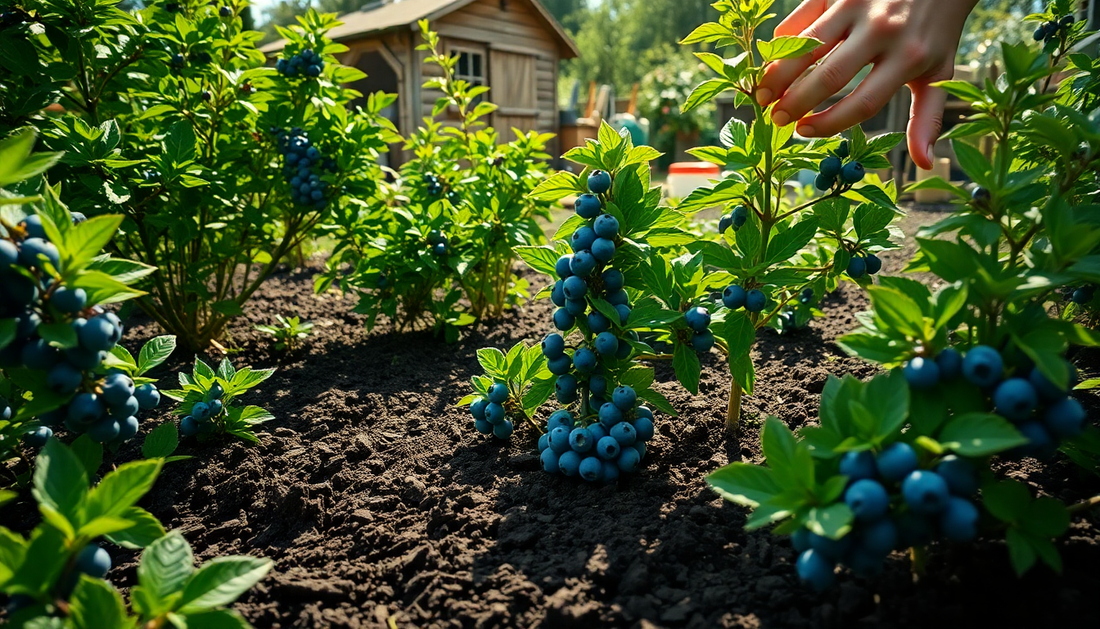
How to Fertilize Blueberry Plants for a Bountiful Harvest
Understanding Blueberry Plant Needs
Blueberry plants are a delight for anyone who loves gardening and fresh produce. These luscious berries don't just offer a sweet and tangy snack; they're packed with antioxidants and vitamins. But before you start dreaming of pancakes drizzled with blueberry syrup, there's a bit of groundwork to do — and fertilizing is key. Let's dig into what blueberry plants need to thrive, starting with the basics.
The first step in creating a fertile environment for your blueberry plants is understanding their specific soil requirements. Unlike other fruit-bearing plants, blueberries prefer acidic soils. The ideal pH range for blueberries is between 4.5 and 5.5. If you're unsure about your soil's pH, it's a good idea to test it. You can find easy-to-use soil test kits at most garden centers.
Blueberry plants also have certain nutrient needs. They're typically greedy for nitrogen, but they won't say no to a bit of phosphorous and potassium either. These three nutrients — nitrogen (N), phosphorous (P), and potassium (K) — are the main components in most fertilizers, often referred to as N-P-K. When selecting a fertilizer for blueberries, look for one specifically designed for acid-loving plants.
Choosing the Right Fertilizer
Not all fertilizers are created equal, especially when blueberries are concerned. Picking the right one can make all the difference. You should steer clear of fertilizers high in nitrogen that aren't designed for acid-loving plants, as they might damage your blueberries. A good choice is an azalea or rhododendron fertilizer, both tailored for acidity.
Organic fertilizers, such as those with cottonseed meal or blood meal, can be fantastic. They release nutrients slowly over time, which coincides nicely with the blueberry plant's needs. These fertilizers enrich the soil's organic matter, feeding the beneficial microbes and fungi essential for healthy plant growth.
An important tip to remember is that more isn't always better. Overfertilization can lead to excessive vegetative growth and fewer fruits. Additionally, it's crucial to avoid fertilizers with chlorides, as blueberries are sensitive to chlorine. Always read the labels carefully and follow the recommended application rates.
The Best Time to Fertilize
Timing is everything in gardening, and fertilizing your blueberry plants is no exception. The best time to fertilize blueberries is in early spring as soon as the buds start to swell. This timing ensures the plants receive the nutrients they need right when they're gearing up for the growing season.
Apply fertilizer again in late spring after the plants have flowered. This second application supports fruit development and helps sustain strong, healthy growth throughout the season. Avoid fertilizing late in the year, as this can lead to tender growth that might not survive the winter.
If you're using an organic fertilizer, consider breaking up your applications into smaller, more frequent doses. This method provides a steady supply of nutrients and aligns with the slow nutrient release typical of organic products.
Application Techniques for Optimal Growth
Once you've chosen your fertilizer, applying it correctly is crucial for maximizing growth and berry production. Proper application techniques can make a significant difference and help ensure your efforts yield sweet rewards.
Start by spreading the fertilizer evenly around the base of the plant, near the drip line where the branches extend. This area corresponds to the root zone, where nutrient uptake is most efficient. Watering the plants after fertilizing helps to dissolve and distribute the nutrients into the soil.
It's essential to be gentle to avoid damaging the plant roots. Avoid applying fertilizer directly against the plant's stem. Instead, keep a small buffer zone between the stem and where you spread the fertilizer. Combining mulching with fertilization also enhances growth by helping to retain moisture and regulate soil temperature.
Ongoing Care and Monitoring
Fertilizing is just one part of maintaining healthy blueberry plants, and ongoing care is crucial for thriving bushes. Keep an eye on the plant's growth and berry production. If you notice leaves that are yellowing or not producing as expected, it might indicate a nutrient deficiency, prompting another soil test.
Weeds can also compete for nutrients, so keep the area around your blueberries weed-free. Regular mulching helps suppress unwanted plants and keeps the soil moist. Don't forget to water consistently, especially during dry spells. Blueberries need about one to two inches of water per week to produce juicy fruits.
By paying attention to these details and applying what you've learned about how to fertilize blueberry plants, you're setting yourself up for a fruitful and delicious harvest. With the right care, your bushes will reward you with bountiful berries for years to come.
